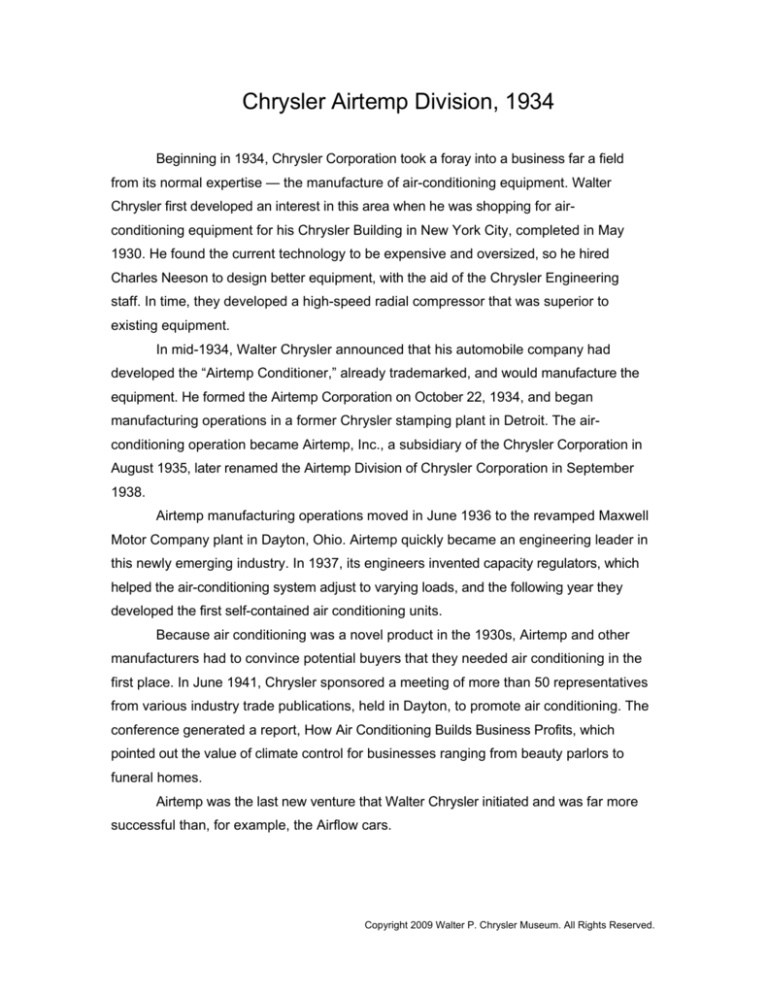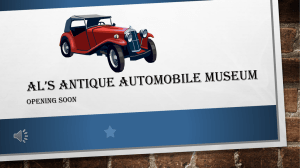
Chrysler Airtemp Division, 1934
Beginning in 1934, Chrysler Corporation took a foray into a business far a field
from its normal expertise — the manufacture of air-conditioning equipment. Walter
Chrysler first developed an interest in this area when he was shopping for airconditioning equipment for his Chrysler Building in New York City, completed in May
1930. He found the current technology to be expensive and oversized, so he hired
Charles Neeson to design better equipment, with the aid of the Chrysler Engineering
staff. In time, they developed a high-speed radial compressor that was superior to
existing equipment.
In mid-1934, Walter Chrysler announced that his automobile company had
developed the “Airtemp Conditioner,” already trademarked, and would manufacture the
equipment. He formed the Airtemp Corporation on October 22, 1934, and began
manufacturing operations in a former Chrysler stamping plant in Detroit. The airconditioning operation became Airtemp, Inc., a subsidiary of the Chrysler Corporation in
August 1935, later renamed the Airtemp Division of Chrysler Corporation in September
1938.
Airtemp manufacturing operations moved in June 1936 to the revamped Maxwell
Motor Company plant in Dayton, Ohio. Airtemp quickly became an engineering leader in
this newly emerging industry. In 1937, its engineers invented capacity regulators, which
helped the air-conditioning system adjust to varying loads, and the following year they
developed the first self-contained air conditioning units.
Because air conditioning was a novel product in the 1930s, Airtemp and other
manufacturers had to convince potential buyers that they needed air conditioning in the
first place. In June 1941, Chrysler sponsored a meeting of more than 50 representatives
from various industry trade publications, held in Dayton, to promote air conditioning. The
conference generated a report, How Air Conditioning Builds Business Profits, which
pointed out the value of climate control for businesses ranging from beauty parlors to
funeral homes.
Airtemp was the last new venture that Walter Chrysler initiated and was far more
successful than, for example, the Airflow cars.
Copyright 2009 Walter P. Chrysler Museum. All Rights Reserved.







